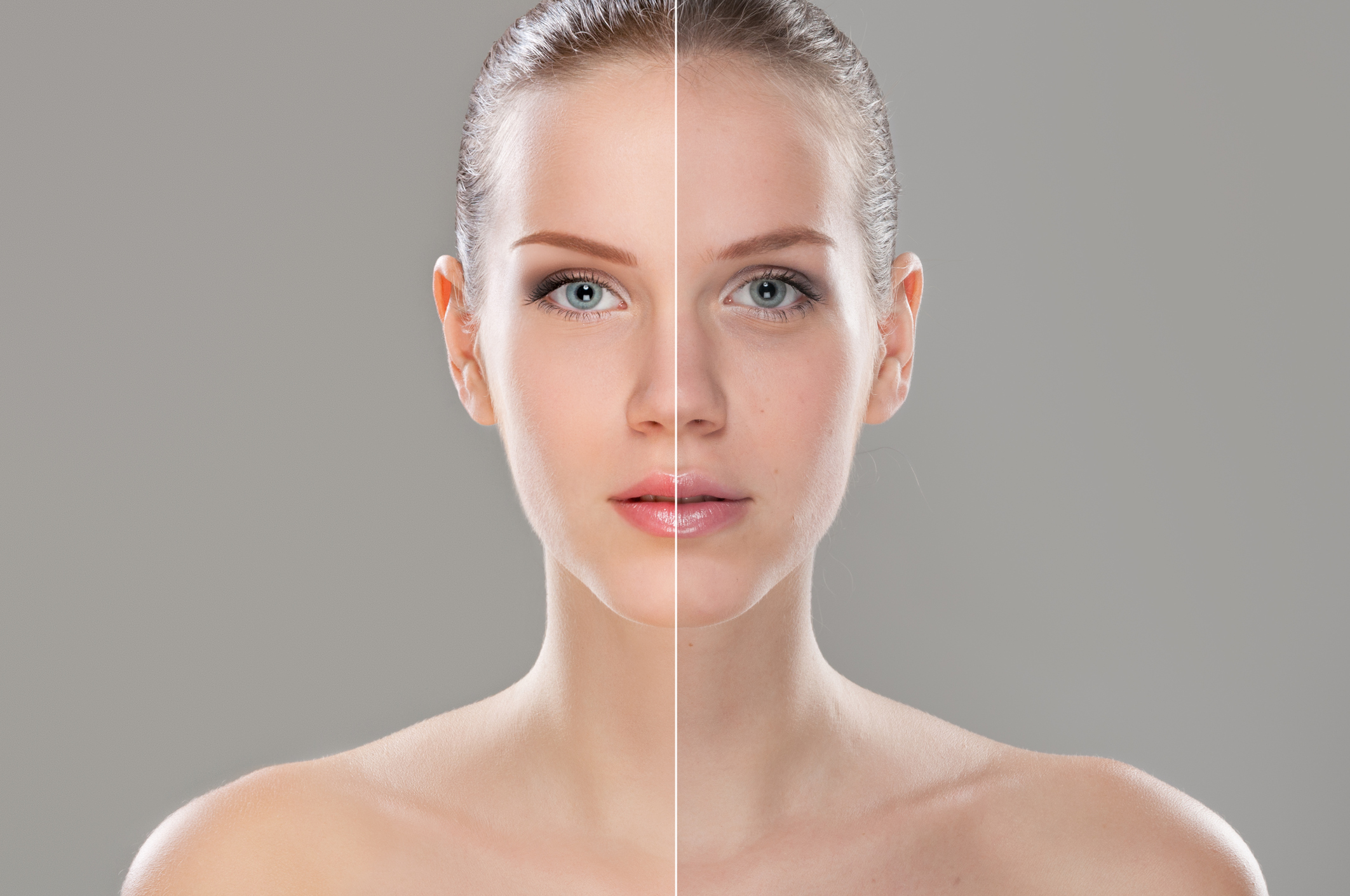What is Hyperpigmentation?
Hyperpigmentation is an umbrella term meaning any condition that leads to discoloration or darkening of the skin. There are many causes of hyperpigmentation, but the most common forms results from excess sun exposure, eczema, psoriasis, and your acne.
But how does discoloration and darkening of the skin form? The answer is melanin.

As you may know, melanin is a pigment that gives color to our skin, eyes and hair. But did you know that melanin is also present in our nasal cavities, and the insides of our ears? At a more microscopic level, melanin is actually produced by melanocytes. Melanocytes are a group of spidery looking cells located at the base of the epidermis layer (or stratum basale).
These melanocytes create melanosomes, which contain enzymes that produce melanin. These melanosomes travel upwards through the dendrites (otherwise known as the many arms of the melanocyte) and towards the surface of the skin, which is why we see darkening by the time they reach the top layer.
The amazing thing about melanocytes are that we have the same amount of melanocytes regardless of skin color, and they were first created during the first three months of our existence. Pretty mind blowing, right?
All around the melanocytes lie surrounding epidermis cells known as keratinocytes, which are in charge of asking the melanocyte for more melanin. Think of it as a person placing an order for a product at a factory. The melanocytes start to produce more melanosomes and send them out to the keratinocyte. The melanosomes start to cluster together over the keratinocyte’s nucleus to shield it from the sun’s penetrating UV rays.
Now, why is this important to know and how is this relevant to hyperpigmentation?
Just like how a mirror emits a glare when you hold it to the light, the melanin starts to show through the skin as the UV rays hit the melanosomes. And the more melanin in your melanosomes, the more apparent and visible the hyperpigmentation is.
Now that we covered how hyperpigmentation occurs within the skin, here are three of the most common forms you might see.
What is Post-Inflammatory Hyperpigmentation (P.I.H)?
You can see PIH especially when you’ve popped a pimple, got an injury or even a rash. In these cases, it’s likely for your body to react with inflammation to fight off outside bacteria and invaders. This then triggers an excess production of melanosomes in the area, and thus an overproduction of melanin, which leads to a dark mark.
What are some other signs for PIH?
PIH resembles dark red, purple, or brown colored marks that occur after your skin becomes inflamed. But if you have a darker skin tone, you’re also more likely to have PIH because your skin is over actively producing melanin.
What is Post-Inflammatory Erythema (P.I.E)?
You’re not alone if you’re confused between PIH and PIE! Both PIH and PIE result from inflammation in the skin, but PIE is caused by agitation in the capillaries or broken blood vessels.
When you create trauma to the skin, the blood vessels underneath the skin are dilating and increasing blood flow to try to repair the trauma in the capillaries.
What are some other signs for PIE?
PIE resembles bright pink or red colored marks on your skin, and it is more likely to show up on people with light to fair skin tones. You can also tell whether your hyperpigmentation is PIE by gently pressing down on your skin with the mark. When the mark turns white momentarily, you’ll know that you have PIE due to the vascular wound underneath your skin.
How Do You Treat PIE?
Since inflammation and vascular wounds lead to PIE, focus on preventing from additional trauma to the skin. Whenever possible, avoid picking at your skin, popping that pimple, and overexfoliating or using physical exfoliators.
What is Melasma?
Melasma is a skin condition that’s more common in women than in men. It appears as large, splotchy or spread-out patches that are grey-brown or brown in color. It’s also commonly seen in areas such as the cheeks, bridge of nose, forehead, chin, and the upper lip, but it can also be present below the neck and down the chest. Similarly to PIH, melasma can form when there is an excess production of melanosomes. But the causes are not as simple. It can occur at any time due to a variety of causes including: hormonal influences, genetics, and prolonged UV exposure rather than inflammation. In some cases, Melasma can also appear during pregnancy.
How Do You Treat Melasma?
Just like PIH, you’re going to want to look for products that can inhibit melanin production in the skin. Since genetics and hormonal influences can lead to melasma, it’s more difficult to treat it than PIH and PIE. In certain cases, you might even need to receive laser treatments to break down the melanin.



